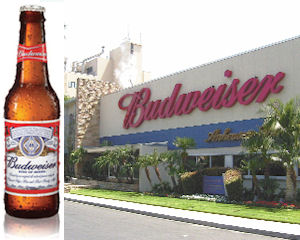Anheuser-Busch InBev North America is in the midst of a $30 million investment in the Van Nuys brewery to make its operations less impactful on the environment. The beer maker announced the investment this month as part of a $1 billion spending plan to improve five breweries around the U.S., including its flagship in St. Louis. While not expected to create additional local jobs, the investment in brewery improvements helps to make the local brewing facility more competitive. “It gives us the ability to bring in more production,” said General Manager Luis Cayo. The Van Nuys brewery is the second-largest Anheuser-Busch InBev has in the U.S., producing about 60 percent of the export volume for the company. It produces the iconic Budweiser and Bud Light beers, as well as 37 other brands. Anheuser-Busch also is among the largest employers in the San Fernando Valley, though Cayo declined to be specific. As an institutional business in the Valley for more than 50 years, it is critical that the brewery prosper and that Anheuser-Busch InBev feels comfortable in putting money into the facility, said Ron Wood, president and CEO of the Valley Economic Alliance. “A major reinvestment in the facility is a further indication of their commitment to stay with us and grow us,” Wood said. “That can only be good for the long term prospects of the region.” As part of its sustainability efforts, the local brewery already has reduced the amount of engineered wood materials used to create product packaging and has updated the facility’s lighting to use energy efficient bulbs, Cayo said. Next, it will improve its brewing process, making it more efficient to remove extract from grains used to make beer. “It helps us in buying less grain for the same amount of beer,” Cayo said, noting it plans to start that project this year. The $30 million expenditure in the Valley targets a more eco-friendly way of doing business. For example, efforts to reduce fiberboard, or engineered wood materials, used in the boxes to ship bottles of beer equates to 45,000 trees, Cayo said. Upgrading to energy efficient lighting and sensors throughout the brewery last year saved 5 million kilowatt hours a year, he added. Improvements at the brewery are ongoing and are outlined in an annual capital plan, Cayo said. The 2008 merger between Anheuser-Busch and Belgian beer maker InBev, valued at $52 billion, has had little impact on the Van Nuys brewery. The merger gave InBev, distributor of the Stella Artois and Beck’s beer brands, a larger presence in the U.S. market. Investment in the Van Nuys brewery and the strategy for the brewery has remained consistent, Cayo said. “It has been very similar and the capital plan did not change from before and after (the merger),” he said. Plans to upgrade the company’s four other breweries also address modernizing brewing processes, as well as reducing impacts on the environment. The St. Louis brewery will receive a utilities overhaul to conserve fuel, electricity and water as well as other improvements at a cost of $60 million. The Houston upgrades, price tagged at $34 million, will expand production and further reduce its environmental footprint, the company said. In Cartersville, Ga., the brewery will receive $34 million to invest in packaging and branding innovation, and it will aim to reduce greenhouse gas emissions. Anheuser-Busch InBev is spending $27 million to increase brewing capacity, packaging lines, and update the wastewater treatment process at the Baldwinsville, N.Y., facility. Revenues for Anheuser-Busch InBev stayed flat in the second quarter compared with the same period in 2010. For the quarter ending June 30, the company reported net income of $1.5 billion, or $1 per diluted share, on revenues of $10 billion. For the second quarter in 2010, the company reported net income of 1.1 billion, or $0.90 per diluted share, on revenues of $9.2 billion.
